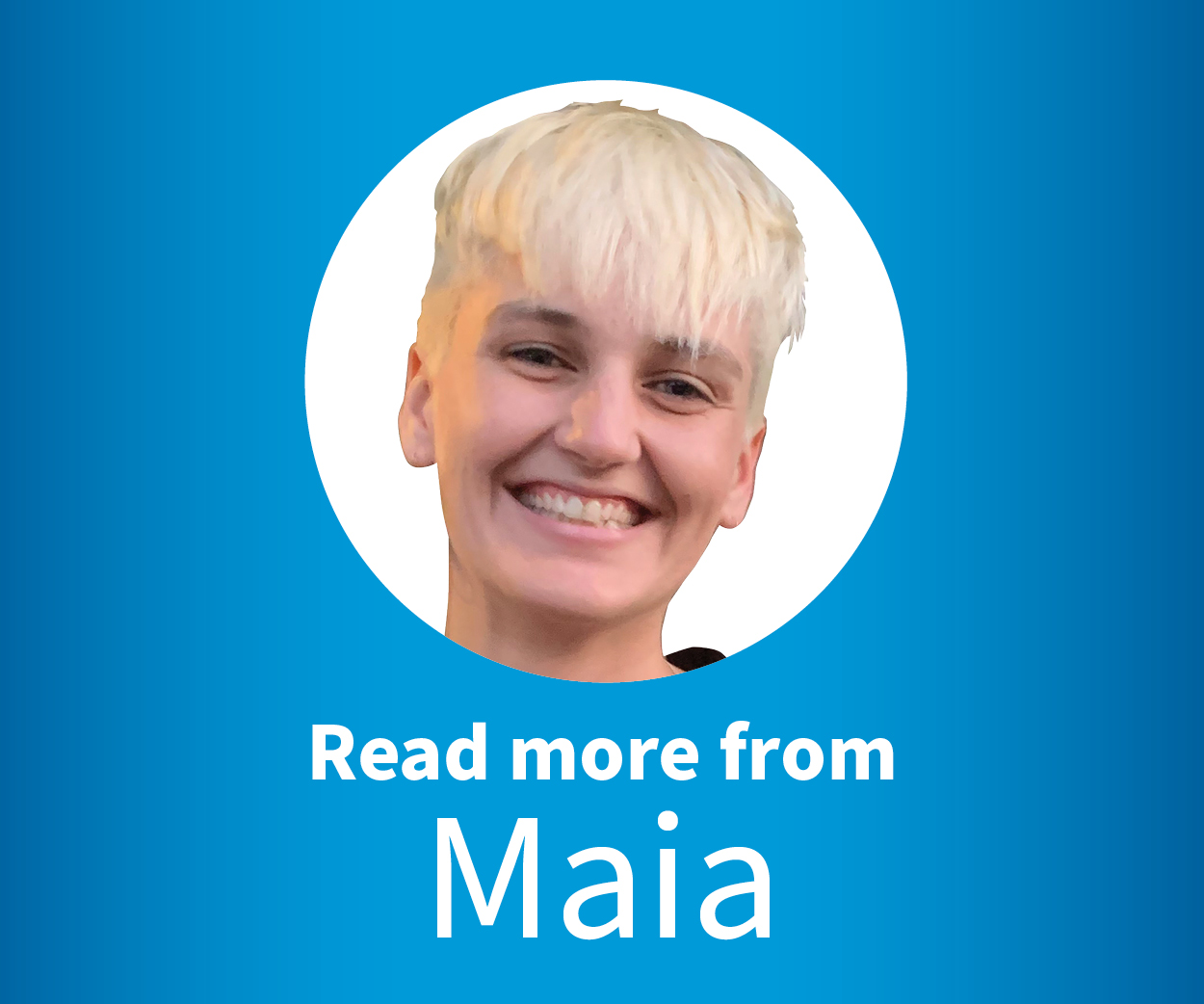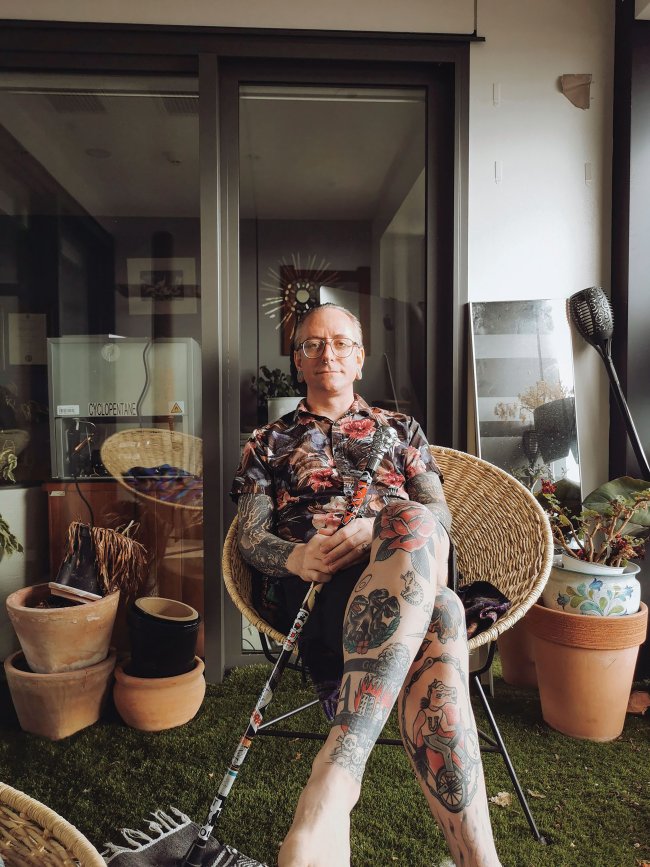Respiratory physician Lutz Beckert considers chronic obstructive pulmonary disease management, including the prevention of COPD, the importance of smoking cessation and pulmonary rehabilitation, and the lifesaving potential of addressing treatable traits. He also discusses the logic of inhaler therapy, moving from single therapy to dual and triple therapy when indicated, as well as other aspects of management
Profiles: Digital-savvy GP Kim Hurst is also the ‘go-to lesbian doctor’
Profiles: Digital-savvy GP Kim Hurst is also the ‘go-to lesbian doctor’

Maia Hall talks with practitioners leading the way towards providing high-quality healthcare for gender-diverse people. Read the first part of the Cover Story
Specialist GP Kim Hurst (she/her) was asked by a 70-something-year-old patient whether she had a husband or a wife.
“Wow, that would not have happened 15 years ago,” Dr Hurst says.
Sharing stories is a big part of general practice – on a human level, patients are wanting to connect with you, she says.
The doctor must explain themselves to some degree, she says. “Just this morning, I had a meeting where someone asked me who my husband was.”
Dr Hurst doesn’t feel offended by that, “it’s just one of those things, where we have to constantly ‘come out’ to everyone, or else let them assume otherwise”.
Raised in the UK, her earliest dream was to be a cyclist, and she thought she had made it big when she started earning £1000 a year on a sports scholarship. But, after graduating with a medical degree in 2002, Dr Hurst worked as a GP in the British Royal Airforce, before moving to New Zealand in 2009. She then spent 12 years at a practice in the Hutt Valley.
Cycling became a hobby: it took her to world 24-hour mountain biking champion in 2014.
Now, Dr Hurst and her wife have two young children. Last year, the family moved to Queenstown for a more outdoors lifestyle.
The 44-year-old plans to see out the rest of her career at The Doctors Whakatipu in Frankton and is buying into the practice.
She describes the population as “rural lite”, and a three-way split of Southland farmers; an eclectic, higher-needs, transient community; and “a decent sector of the rainbow community”.
Dr Hurst, the Green Cross Health virtual care clinical lead, says digital health care can be particularly helpful in a rainbow setting.
If a patient is trans and not “out” in the community, then an online session is more anonymous and “much more effective than dragging someone into a consult room”.
As a known member of the community, Dr Hurst has been asked several times to give presentations or share her story in public.
She says she’s one of the “go to” lesbians in medicine, which is strange, but nice that many patients Google her and seek her out “because of a shared experience”.
Dr Hurst is also a GP trainer and says she has a good chuckle when registrars do not pick up on clues from rainbow patients.
“We have a little reflection on some of the language and clues that were in the consult – and that’s something I can share with other GPs who just don’t have that experience.
“We need a workforce that represents the population we serve. But there aren’t many GPs that I know of who are ‘out’,” she says.
Wellington-based specialist GP Lucy O’Hagan says life is pretty different now, after coming out as a member of the LGBTQIA+ community at the age of 50.
The biggest challenge is judging what and when and whether to disclose to patients about her own life, Dr O’Hagan says.
“We think as GPs we’re interviewing patients, but really, they’re interviewing us,” they point out.
Aware that a lot of patients are religious, and careful about when to come out, Dr Hagan often plays it safe: “I don’t want to deal with people’s reactions.”
While “not so worried about getting beaten up, I always do make sure I feel safe before walking down the street holding hands with my partner”.
Having always been referred to “as a she and a her”, Dr O’Hagan recognises the importance of using pronouns in ways that signal safety to the LGBTQIA+ community. Not bothered about the pronouns people use to describe her, she settles on “any pronouns are fine” – hence, New Zealand Doctor Rata Aotearoa’s use of both “they” and “she”.
“The whole idea that there’s only one way to be female is just weird,” they say.
They hope most practitioners, in a consultation with an LGTQIA+ patient, can conceal their judgement – a patient would be unlucky to encounter negativity from their GP.
But, upon reflection, they add: “Well, my expectation of a GP is that we’re able to handle our judgement. I just assume that’s a skill that doctors have, but some of them don’t.
“Some will think they’re handling it, but they’re just saying some random shit that sounds professional but is actually harming their patient.”
An experienced educator, Dr O’Hagan has run role-play sessions for GPs on how to conduct a consultation for someone seeking gender-affirming care.
“Many GPs have never had that experience and are quite awkward and not confident at all,” she says.
As a queer person herself, “it’s so obvious when someone’s having a judgement”. If doctors are part of the rainbow community, they have lived experience of being “othered”, which may give an advantage when working with patients who have a similar experience.
But that’s not the only factor, Dr O’Hagan says. If a gay doctor has little experience in gender-affirming hormones, they’re of course going to need to refer to someone who knows more.
“But you do have to be open and supportive and curious,” they say.
LGBTQIA+ doctors have a baseline understanding of people’s identity, but there is much diversity within that.
Attending the Australian Lesbian Medical Association conference in 2018 changed Dr O’Hagan’s perspective of the role sexuality plays in everyone’s lives, she says.
“Forty-eight hours in Hanmer Springs with only lesbian doctors – you realise how much you are giving away or concealing about who you are.”
It makes you realise how much you are constantly assessing people “in the real world” to find out who is safe, they say.
The conference helped Dr O’Hagan to appreciate just how much lesbians have worked to carve their space within medicine, and she is proud to have honoured that story.
Bisexual and gender-queer nurse practitioner Mikey Brenndorfer says “queer-coding” at the Youth Health Hub in west Auckland is a huge part of providing inclusive and welcoming care.
Often via visual aids such as rainbow and transgender flags, pronoun badges, gender-neutral toilet signs and clothing choices, queer-coding is the use of subtext to create a safe space for the LGBTQIA+ community, they explain.
Mikey Brenndorfer uses both “he” and “they” pronouns and knows that the way they dress brings young people in through the door. It doesn’t take long for word to spread, he says. As about half of the Youth Health Hub’s staff belongs to the LGBTQIA+ community too, the clinic was quickly identified as a safe space.
"Authentic gender expression makes people feel safe,” he says.
Bringing your personal experience to patient interaction is a vital part of primary health, the NP says.
“And that’s not just to do with gender or sexuality.” Mikey Brenndorfer brings their personal experience of asthma to consultations too – the psychology of an asthma attack and what it’s like personally. “Having a shared experience is always relevant.”
Having worked since 2017 at the Youth Health Hub, run by Te Puna Manawa HealthWEST, they have honed their ability to see the big picture of a patient’s life.
The clinic provides longer consultations for free – while the hub enrols some patients, the model is generally referred to as an “extra”, rather than “instead of” regular primary care. Te Puna Manawa has a separate contract with Te Whatu Ora and does not receive capitation. New patients get an hour-long initial appointment, and then 30- minute follow ups. Mikey Brenndorfer says the extra time is useful for gender-affirming healthcare, which makes up a good chunk of the clinic’s workload. A mental health check-up is part of every consultation.
“Rainbow young people gravitate towards these types of clinics as they feel safer than others. And they know what we provide, including sexual health, mental health, we’re wrap around, so people feel safe to disclose their rainbow identity.”
Born in Canada, Mikey Brenndorfer moved to Aotearoa at 15. They are upfront about their privileges and position within the rainbow community. Mikey was assigned male at birth and is dating a non-binary person who was assigned female at birth. “In a lot of ways, we’re straight passing,” they say. Straight passing is where an individual or two people in a relationship are afforded privileges because they are not visibly part of the rainbow community. This means they might be safer in some spaces than other trans or gay people.
Mikey Brenndorfer says the safety of their clinic means patients never want to leave. Because it’s funded only for 12 to 24-year-olds, the clinic provides recommendations for other affirming practices after they “age out” of the services.
The team knows which are the best practices in Auckland for their patients to move on to. However, fees, enrolment criteria and distance can make these hard to access, and many with inclusive staff aren’t taking new enrolments.








![Barbara Fountain, editor of New Zealand Doctor Rata Aotearoa, and Paul Hutchison, GP and senior medical clinician at Tāmaki Health [Image: Simon Maude]](/sites/default/files/styles/thumbnail_cropped_100/public/2025-03/Barbara%20Fountain%2C%20editor%20of%20New%20Zealand%20Doctor%20Rata%20Aotearoa%2C%20and%20Paul%20Hutchison%2C%20GP%20and%20senior%20medical%20clinician%20at%20T%C4%81maki%20Health%20CR%20Simon%20Maude.jpg?itok=-HbQ1EYA)
![Lori Peters, NP and advanced health improvement practitioner at Mahitahi Hauora, and Jasper Nacilla, NP at The Terrace Medical Centre in Wellington [Image: Simon Maude]](/sites/default/files/styles/thumbnail_cropped_100/public/2025-03/2.%20Lori%20Peters%2C%20NP%20and%20advanced%20HIP%20at%20Mahitahi%20Hauora%2C%20and%20Jasper%20Nacilla%2C%20NP%20at%20The%20Terrace%20Medical%20Centre%20in%20Wellington%20CR%20Simon%20Maude.jpg?itok=sUfbsSF1)
![Ministry of Social Development health and disability coordinator Liz Williams, regional health advisors Mary Mojel and Larah Takarangi, and health and disability coordinators Rebecca Staunton and Myint Than Htut [Image: Simon Maude]](/sites/default/files/styles/thumbnail_cropped_100/public/2025-03/3.%20Ministry%20of%20Social%20Development%27s%20Liz%20Williams%2C%20Mary%20Mojel%2C%20Larah%20Takarangi%2C%20Rebecca%20Staunton%20and%20Myint%20Than%20Htut%20CR%20Simon%20Maude.jpg?itok=9ceOujzC)
![Locum GP Helen Fisher, with Te Kuiti Medical Centre NP Bridget Woodney [Image: Simon Maude]](/sites/default/files/styles/thumbnail_cropped_100/public/2025-03/4.%20Locum%20GP%20Helen%20Fisher%2C%20with%20Te%20Kuiti%20Medical%20Centre%20NP%20Bridget%20Woodney%20CR%20Simon%20Maude.jpg?itok=TJeODetm)
![Ruby Faulkner, GPEP2, with David Small, GPEP3 from The Doctors Greenmeadows in Napier [Image: Simon Maude]](/sites/default/files/styles/thumbnail_cropped_100/public/2025-03/5.%20Ruby%20Faulkner%2C%20GPEP2%2C%20with%20David%20Small%2C%20GPEP3%20from%20The%20Doctors%20Greenmeadows%20in%20Napier%20CR%20Simon%20Maude.jpg?itok=B0u4wsIs)
![Rochelle Langton and Libby Thomas, marketing advisors at the Medical Protection Society [Image: Simon Maude]](/sites/default/files/styles/thumbnail_cropped_100/public/2025-03/6.%20Rochelle%20Langton%20and%20Libby%20Thomas%2C%20marketing%20advisors%20at%20the%20Medical%20Protection%20Society%20CR%20Simon%20Maude.jpg?itok=r52_Cf74)
![Specialist GP Lucy Gibberd, medical advisor at MPS, and Zara Bolam, urgent-care specialist at The Nest Health Centre in Inglewood [Image: Simon Maude]](/sites/default/files/styles/thumbnail_cropped_100/public/2025-03/7.%20Specialist%20GP%20Lucy%20Gibberd%2C%20medical%20advisor%20at%20MPS%2C%20and%20Zara%20Bolam%2C%20urgent-care%20specialist%20at%20The%20Nest%20Health%20Centre%20in%20Inglewood%20CR%20Simon%20Maude.jpg?itok=z8eVoBU3)
![Olivia Blackmore and Trudee Sharp, NPs at Gore Health Centre, and Gaylene Hastie, NP at Queenstown Medical Centre [Image: Simon Maude]](/sites/default/files/styles/thumbnail_cropped_100/public/2025-03/8.%20Olivia%20Blackmore%20and%20Trudee%20Sharp%2C%20NPs%20at%20Gore%20Health%20Centre%2C%20and%20Gaylene%20Hastie%2C%20NP%20at%20Queenstown%20Medical%20Centre%20CR%20Simon%20Maude.jpg?itok=Z6u9d0XH)
![Mary Toloa, specialist GP at Porirua and Union Community Health Service in Wellington, Mara Coler, clinical pharmacist at Tū Ora Compass Health, and Bhavna Mistry, specialist GP at Porirua and Union Community Health Service [Image: Simon Maude]](/sites/default/files/styles/thumbnail_cropped_100/public/2025-03/9.%20Mary%20Toloa%2C%20Porirua%20and%20Union%20Community%20Health%20Service%20in%20Wellington%2C%20Mara%20Coler%2C%20T%C5%AB%20Ora%20Compass%20Health%2C%20and%20Bhavna%20Mistry%2C%20PUCHS%20CR%20Simon%20Maude.jpg?itok=kpChr0cc)